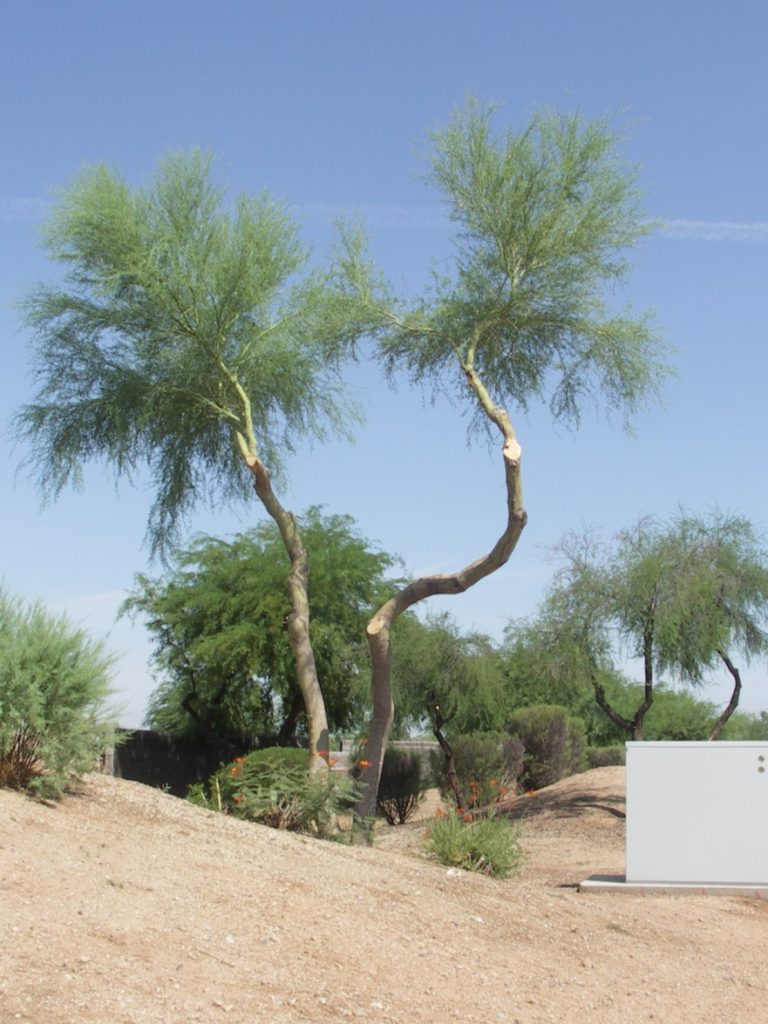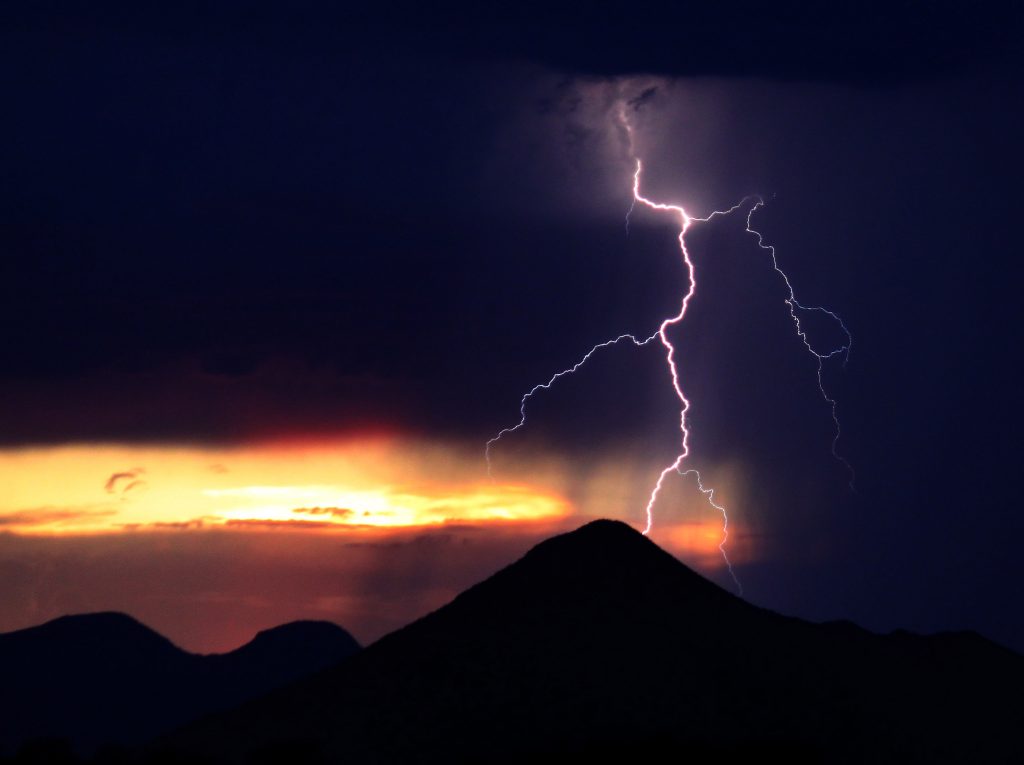Monsoon season is upon us and one important change you can make to help prevent ‘wind throw” (trees blowing over) has to do with watering. You should avoid watering near the trunk. Wet soil near the trunk discourages roots from growing out to the edge of the canopy where they should be. Wet soil near the trunk is also unstable and may be unable to hold the tree in the ground during strong winds. The solution is to move the emitters to the edge of the canopy. If your tree is large, you may need to add additional emitters or those that apply a greater volume to provide enough water. Page 4 of our handy guide, Landscape Watering by the Numbers, has a great graphic that shows where to place the emitters.
How Much Water Does My Tree Need?
Water – Use It Wisely has taken all the guesswork out of this dilemma by including a handy table on page 9 of Landscape Watering by the Numbers. Just find your trees’ canopy size and the amount of water in gallons right below. This amount of water should be applied according to the guide on page 18. The frequency will change depending on the size of tree, the season, and whether it is desert adapted or high water use. The handy guide, Landscape Plants for the Arizona Desert, has more than 200 low water use plants with photos and descriptions in case you’re not sure if yours are water thrifty. Plants like ficus, ash, citrus, queen palms, and pygmy date palms are considered high water use. Remember, it is always better to water deeply but infrequently in our desert soils.
Should I Thin My Trees?
You may also have seen ads or been told that it’s time to thin your trees. In most cases, this couldn’t be further from the truth. Thinning can actually contribute to MORE storm damage.
Here are a few rules to follow to help your trees stay strong.

- Remove structural defects first. This includes narrow angles of branch attachment, co-dominant stems or trunks, cracks in branches, and crossing branches.
- Prune branches at the correct location, in between the branch bark ridge and branch collar (see illustration).
- Do not apply pruning sealants or paint. The tree will naturally heal itself when cuts are made at the correct location.
- Avoid removing branches and foliage that would expose previously shaded trunk tissue to the sun’s rays, as sunburn can result.
- Limit pre-monsoon pruning to 10 – 15 percent thinning, and 10 percent branch-end weight reduction.
- 80 percent of the pruning should be done in the exterior of the canopy, not the interior. Interior stripping of branches is called lion tailing and reduces the wind buffering capacity of the tree. It also removes foliage that produces energy the tree uses to grow, heal wounds, and defend itself against pests and diseases.
- Mature trees need less pruning; no more than 20 percent and not every year.
- Remember the two-thirds rule. A balanced tree should have 2/3 of its total height in canopy and 1/3 of the total height in visible trunk.
What should I do about Staking and Tying?
If the original nursery stake that came with the tree when you purchased it is still next to the trunk, remove it as it can rub and cause wounds. If your tree can’t stand without being staked, use two, 2-inch round wooden poles to secure it and use a piece of rubber hose with wire to loosely tie it between the poles.
In order for the trunk to produce strong, dense wood it must be able to move gently within the ties.
Never, ever top a tree. The wounds produced never heal and any shoots that sprout are weakly attached just under the bark. A topped tree will never regain the strength and form it previously had.
Check out our video, How to Maintain Your Landscape to Keep it Growing Strong, for even more information on tree and landscape maintenance. The video is part 9 of our 10-part series on how to turn your landscape from drab to fabulous.
Cathy Rymer is a former water conservation coordinator with the City of Chandler, one of 20 Water – Use It Wisely partners to offer water-saving advice and programs.



